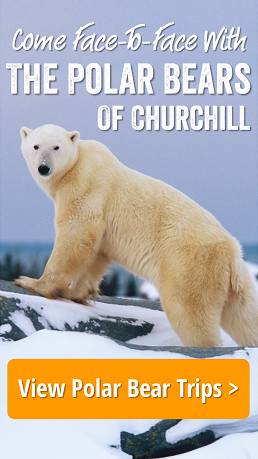by Steve Selden | Jan 26, 2015 | Churchill Photography
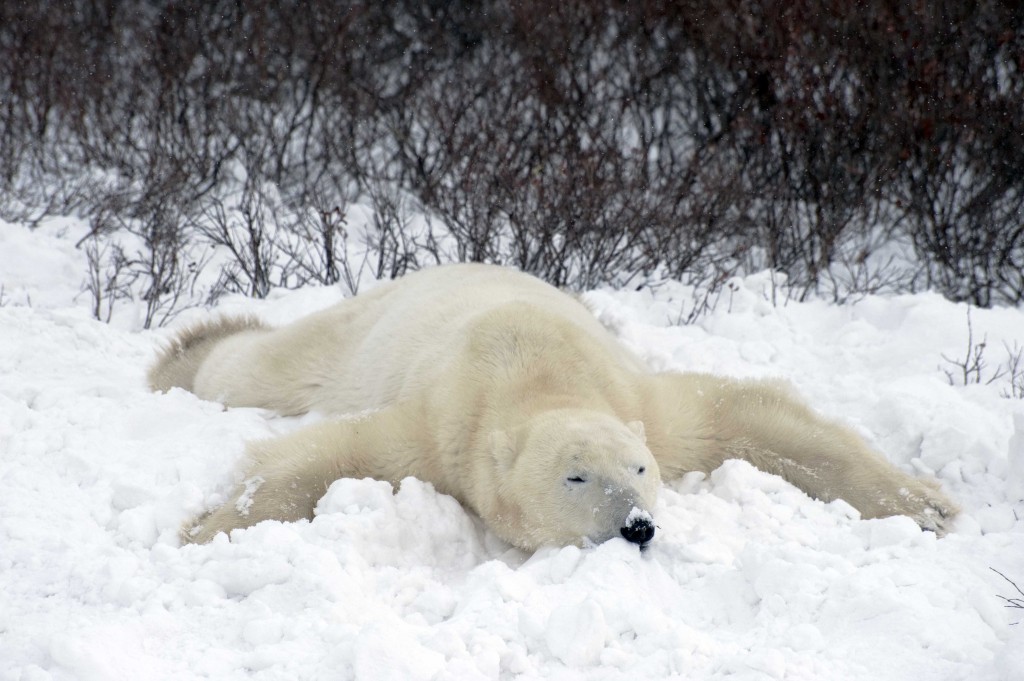
A polar bear relaxes and cools in the snow. Colby Brokvist photo.
This photo above by Natural Habitat guide Colby Brokvist clearly illustrates how well polar bears insulate and regulate their body heat. Cold temperatures in Churchill during polar bear season are often still pretty warm for bears. This polar bear is cooling off in snow while resting and conserving energy. Summer allows bears to cool off in the Hudson Bay and they can more often be seen swimming or trying to prey on seals lounging on remnant ice floes or tidal flats.

Polar bear cooling off in Churchill, MB.
by Steve Selden | Jan 18, 2015 | Churchill Photography
The aurora or northern lights season in Churchill, MB. On February first the first Natural Habitat group of travelers will head north to immerse themselves in some Arctic culture and hopefully experience the incredible magic in the sky. look for updates on all that’s going on up there over the months of February and March. It should be an exciting couple of months!
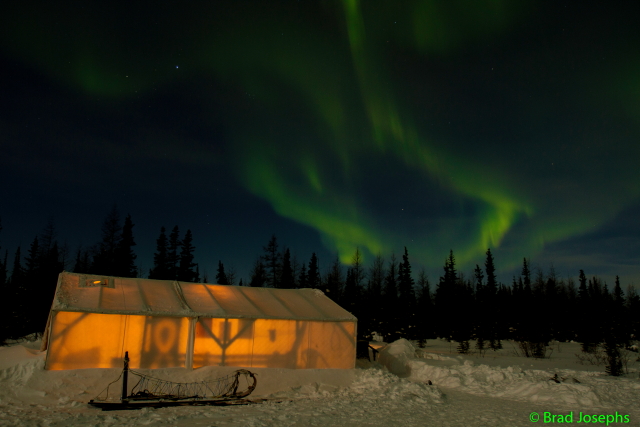
Incredible shot of musher hut with aurora above. Brad Josephs photo.
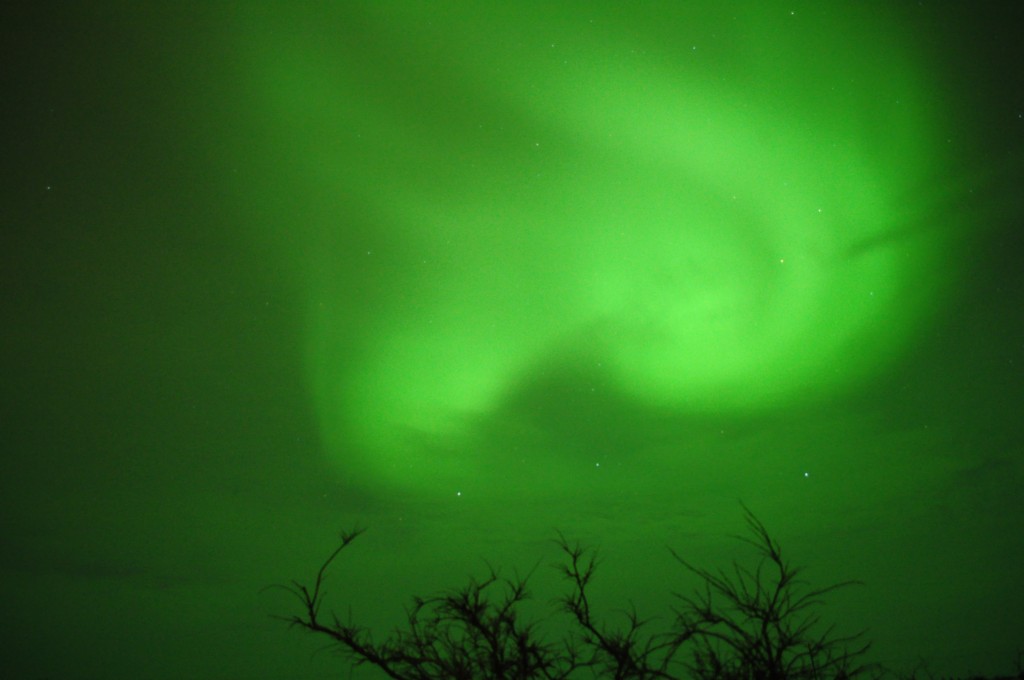
Swirling northern lights. Jeremy Pearson photo.

Northern lights in Churchill. Jeremy Pearson photo.
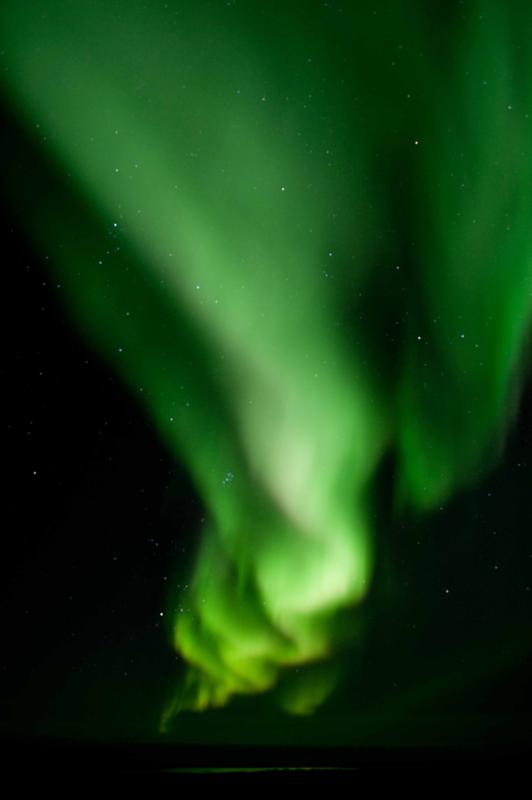
Aurora Borealis in Churchill, Manitoba. Photo Colby Brokvist
by Steve Selden | Jan 16, 2015 | Churchill News
Those that travel to Churchill, Manitoba, one of the increasingly rare places on Earth, you can “leave it all behind”, as they say, should literally really consider leaving a few things behind. Not just the routine stresses or habits of daily life.

A sun dog casting its’ rays on an inukshuk. Brad Josephs photo.
1. Cell Phone-Although Churchill just upgraded cell service to 4G – high speed, this is a place travelers might refrain from using or even bringing a cell phone. I clearly remember the awful feeling I had after working in Churchill for about 10 years upon hearing cell service was coming to town. The “disconnected” experience, especially in such a pristine and wild frontier town is a dying phenomena. When traveling to a place that you might only visit once in your lifetime, let the mind and soul get the full experience. In such a tight knit community people tend to interact face to face as they often see each other almost every day.
2. Running Shoes- Even the most avid runners might consider taking some time off from this form of exercise in Churchill. Unless you plan to run around the nine or so blocks of town, and get plenty of strange looks, any long distance out-of-town jaunts are discouraged most seasons of the year. Unless you have a friend driving along in a car with you or you can run faster than 35 mph for an extended time. Now you could run in the dead of winter though it’s a bit difficult in eight layers of clothing and sorels.
3. Cats- Believe it or not a Natural Habitat traveler insisted on bringing their cat from California on a trip to Churchill. We made accommodations for the pet but that’s really not the point. Given the number of sled dogs in Churchill and north in general it really can’t be considered “cat country” by any stretch of the imagination.

My excellent room mate Buddy the cat.
4. Too Much Camera Equipment- While Churchill is one of the most diverse and inspiring places in North America to photograph or video wildlife and landscapes, someone who travels to Churchill seeking a fully immersed experience might consider scaling back, taking in the live experience and letting the mind store lifetime memory images. Now, serious or professional photographers will have a slightly different opinion but they tend to have mastered the ability to enjoy both aspects of the craft..enjoying the moment while getting their shots or footage. I have guided many summer beluga whale trips where some folks spent too much time and energy trying to get the one-in-a-million poster-shot and miss the amazing full immersion of the adventure. This theory translates to polar bear season as well. There’s definitely an aura that exists in these far reaching places that one cannot translate through a lens.

Natural Habitat travelers swimming in the Churchill River. Steve Selden photo.
5. Bathing Suit- The town complex does have an indoor pool thought the hours of operation are a little spotty. Unless you’re planning on taking a polar bear plunge in the 40 C Hudson Bay, which on certain summer “hotspot of Manitoba” days could be an option. You might also want to jump in the Churchill River ( more like 50-55 C down – river a bit), which I have done numerous times. So, actually want to bring a bathing suit and which retrospectively makes this post Four Things You Don’t Need In Churchill. We will leave this last one up to you. Skinny dipping is always an option.
by Steve Selden | Dec 15, 2014 | Churchill Photography

Polar bears sparring on the Churchill Tundra. Brad Josephs photo.
Being prepared with all the right gear is the best photo tip I can offer from years of working with professional photographers in the field. If you’re not a full-time wildlife photographer that could be tricky. As we all know ,camera gear is pricey, so when going on an once -in – lifetime trip like Churchill to see polar bears, renting equipment might be the best option.

You don’t need to spend a ton of money on different filters, meters or other accessories but you should absolutely try and acquire the longest lens you can. A 600 mm or even a 800 mm or longer lens to get up -close and personal would be optimal.

The FL 880 f/8 provides high contrast even at pictures taken at long distances.
Many times you are close enough in the polar rovers to utilize general photography lenses such as 200-400 mm telephoto types. However, to capture many of the shots like the sparring bears above from Natural Habitat guide Brad Josephs you need the longer lenses. Again, if you are not going to be using the lens on a regular basis, consider renting for the week of the trip. It’s well worth the expense to get those amazing shots. Mixing the up-close photos with the landscape and horizon shots allows you to tell a deeper more personal story with your camera.
by Steve Selden | Dec 12, 2014 | Conservation
Let’s face it, “cold” is what the Arctic does best….especially to those living below this amazing region of our planet Earth. So, other than the hearty mammals, particularly the mighty polar bear and humans, very few birds overwinter at high latitudes. Less than 10% of all birds that venture to Arctic and sub-Arctic regions unpack their bags and set up a permanent home there.
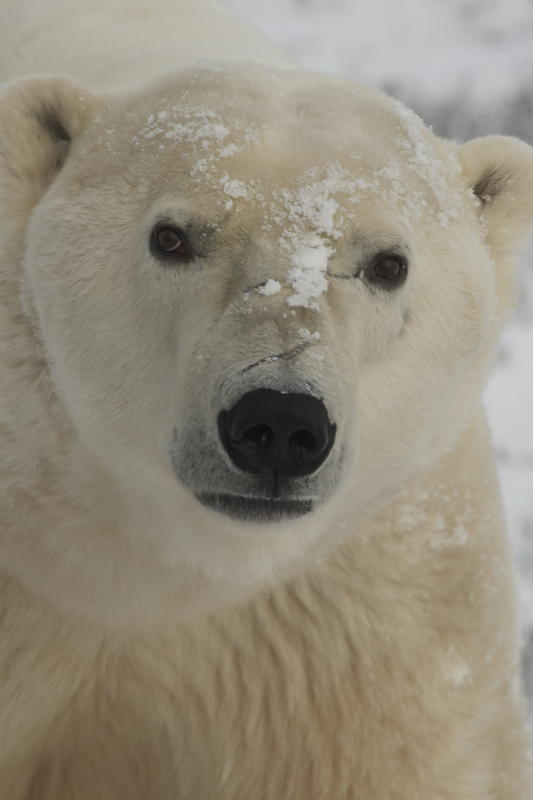
Polar bears are the king of the Arctic. Photo: Paul Brown
Birds that do either have some hearty DNA or have developed some unique ways to cope with cold temperatures that can dip to -55 Celsius. Most of you know the raven can subsist just about anywhere on the planet and the intelligence and intuitiveness of this creature has been well documented. He is truly the sentinel of true survival…especially as his shining black defiantly glares out against the snowy north.
Rock and willow ptarmigan can be seen in Churchill as the fall arrives and throughout the winter, changing to their winter’s best camouflage white. Ivory and the illusive and highly prized Ross’s gull also stay put for the winter. I’ve spotted the Ross three times in over a decade of guiding Natural Habitat Churchill summer trip. All three times the sightings were facilitated by Churchill birding master and legend Bonnie Chartier when we worked together up north.
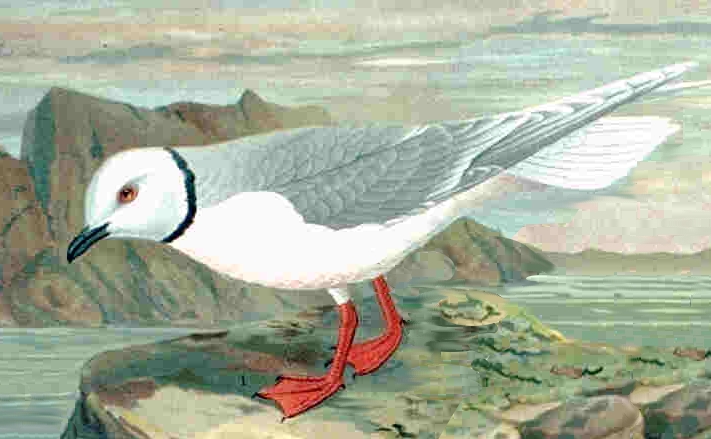
The Common and hoary redpoll, Brunnich’s Guillemot, Little Auk and Black Guillemot also inhabit the Arctic full-time. Snow buntings and gray jays are quite friendly species that call Churchill home all year. Higher up in Greenland the birds tend to shelter in utility tunnels known as utilidors.
Boreal chickadees and occasionally boreal owls and great horned owls inhabit the boreal forest. And, the mighty gyrfalcon, the fourth fastest bird on the planet…er off the planet, can be seen sporadically hunting or soaring from point to point. I have seen this bird dart across the Churchill tundra and even through town.

Gyrfalcon on the tundra in Churchill,MB.Paul Brown photo.
The most intuitive behavior exhibited for warmth and survival is how ptarmigan and common hoary redpolls take shelter in snowdrifts and endure the frigid cold by utilizing the snow as insulation. Ptarmigan and Snowy Owls grow leg and feet feathers to keep them warm throughout the winter months. They also change plumage from dark to white in order to stay camouflaged and safe from predators.
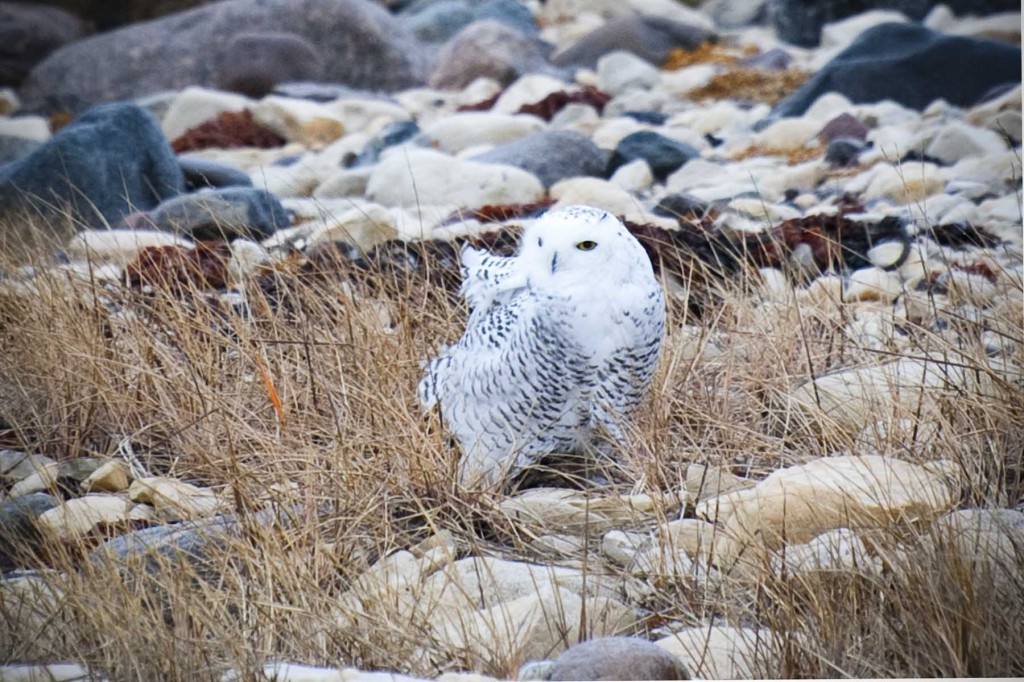
Snowy owl greets virgin travelers to the north. Colby Brokvist photo.
The summer months are reminiscent to a beach-side resort with the bird population ballooning by more than 200 additional migrant species arriving in early spring. These are birds that cannot survive the harsh conditions of winter in the far north though return each year to take advantage of the bounty of food sources thriving in the Arctic summer. The most incredible journey is clearly that of the Arctic tern…making the pole to pole round trip of nearly 45,000 miles.

Arctic tern hovering above the nesting grounds. Rhonda Reid photo.
Many of these species arrive early and set up nests for the short but productive breeding season. With snow cover still prevalent, these hearty nurturing parents live off their stored fat reserves for energy. The majority of the Arctic and sub-Arctic species are wetland feeders such as various ducks, swans and geese. Waders and shorebirds also scour the marshes and shoreline plucking all the organisms they can from the Earth.

















